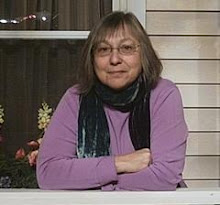Ironically, the Vinegar Hill section of Brooklyn was named in honor of an Irish battle against the British, and it resides on land that was confiscated from the British. The land was initially the property of Rajaike, an English farmer and loyalist who supported the British during the Revolutionary War. At the end of th
Olympia was to be fashionable and exclusive, an oasis in an area surrounded by water, with salubrious air, an excellent spring, nearby farms for produce and readily available building supplies, all of which eliminated dependency on Manhattan. The Sands were sure that Olympia would grow and prosper as a summer retreat, but this was not to be. The dream that was never realized; instead much of the character of the area was the result of John Jackson's plans.
John Jackson was a ship builder. He established a shipyard at the foot of Hudson Avenue, where he also constructed homes for his workers, and he sold some of the land to the US government for the for the creation of the Navy Yard. He named the area Vinegar Hill in hope of attracting Irish immigrants. The Battle of Vinegar Hill was a bloody battle fought between the Irish and British troops for control of Ireland. And it was this battle that galvanized the Irish in guerrilla warfare that eventually led to the return of Ireland as an independent country.
a ship builder. He established a shipyard at the foot of Hudson Avenue, where he also constructed homes for his workers, and he sold some of the land to the US government for the for the creation of the Navy Yard. He named the area Vinegar Hill in hope of attracting Irish immigrants. The Battle of Vinegar Hill was a bloody battle fought between the Irish and British troops for control of Ireland. And it was this battle that galvanized the Irish in guerrilla warfare that eventually led to the return of Ireland as an independent country.
The Vinegar Hill Historic District is an example of a pre-Civil War working class neighborhood. The homes are modest and many are untouched today by modernization. Walking through the neighborhood feels something like being in a twilight zone where any minute a horse and buggy may appear, along with a rowdy group of workers. Hudson Avenue, the main shopping street, has store fronts that create the small town feeling that existed after the Revolutionary War. According to an old directory, there were 58 households in Vinegar Hill and the majority of the residents were laborers. Tavern proprietors composed one quarter of the population.
While Olympia did not take hold as a summer resort, the homes and businesses in the area were built in a splendid Greek Revival style, with columns, cornices and pilasters reminiscent of ancient Greece. The Greeks represented democracy, and the Greek architectural style proclaimed democracy as an ideal both in government buildings and in a working class neighborhood homes.
It was at the bottom of this ridge that the bodies of American Revolutionary War soldiers who died on British prison ships were found, in shallow graves along the bay. A monument, the Martyrs Tomb, was erected and the bodies interred under the monument. However, the remains were moved yet again, this time to Fort Greene Park where they do remain.








































